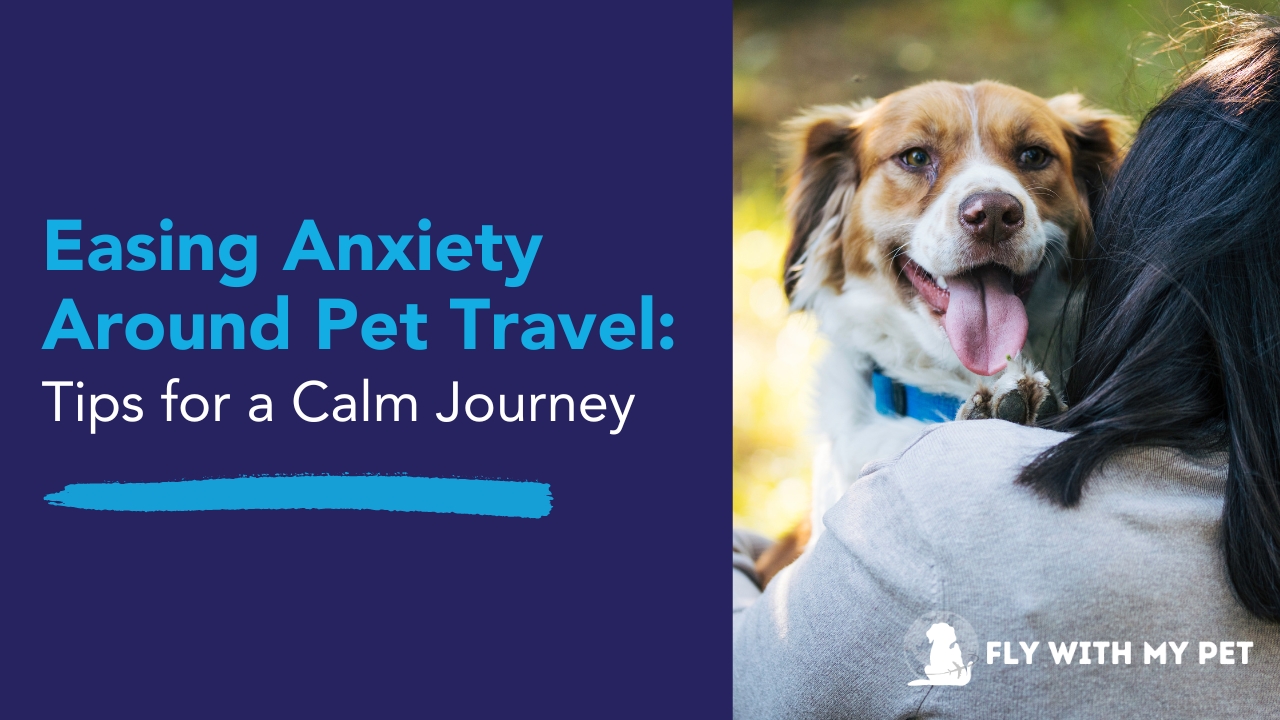
Traveling with pets can be an exciting adventure, but it can also bring a significant amount of stress and anxiety, both for pets and their owners. Whether you’re planning a short car trip or a long flight, it’s important to take steps to ensure that your pet is comfortable and calm throughout the journey. Here are some general tips for easing your pet’s anxiety during travel, as well as advice on when and how to consider using medication to alleviate anxiety.
General Tips for Reducing Pet Anxiety During Travel
- Get Your Pet Comfortable with Their Carrier
One of the best ways to reduce travel anxiety is to make your pet feel safe and secure in their carrier. Well before your trip, allow your pet to spend time in the carrier at home. Place comfortable bedding inside, along with some favorite toys or treats, to create a positive association. This will help them view the carrier as a cozy, familiar space when it’s time to travel. We have several blogs on this site to help you with all things pet carriers, including finding the right pet carrier for dogs and cats and the importance of a properly fitted pet carrier for long journeys. - Practice Short Trips
If your pet is new to traveling, gradually introduce them to the experience with short trips. Take them for a quick drive around the neighborhood to get them used to the motion and sounds of travel. Gradually increase the length of these practice trips to help reduce their anxiety about longer journeys. - Stay Calm
Pets are highly attuned to their owners’ emotions. If you’re stressed or anxious about the trip, your pet may pick up on this and become more anxious themselves. Stay calm and positive throughout the travel experience, speaking to your pet in a soothing tone and reassuring them that everything is okay. - Use Calming Products
There are a variety of calming products available that can help reduce your pet’s anxiety. These include calming sprays or diffusers that release soothing pheromones, anxiety wraps like the Thundershirt, and natural supplements such as CBD or calming chews made with ingredients like chamomile or L-tryptophan. Be sure to consult your vet before trying new products. - Maintain a Routine
Pets thrive on routine, and travel can disrupt their daily schedule. Try to maintain as much of your pet’s usual routine as possible while traveling. Feed them at their normal mealtimes, offer regular potty breaks, and stick to familiar bedding or blankets to make them feel more at ease.
Medicating Your Pet for Anxiety
In some cases, despite your best efforts, your pet may experience high levels of anxiety during travel. If your pet shows extreme signs of stress, such as excessive panting, drooling, shaking, or vocalizing, you may want to consider medicating your pet to help ease their anxiety.
- Consult Your Veterinarian
Before giving your pet any kind of medication, it’s crucial to consult your veterinarian. They can help you determine whether medication is necessary, recommend the right type, and ensure you administer the correct dosage based on your pet’s size, breed, and health condition. - Prescription Medications for Anxiety
There are several types of prescription medications that veterinarians may recommend for pet anxiety, especially during travel. Common options include:- Benzodiazepines (like Alprazolam or Diazepam): These medications can help to relax pets and reduce anxiety.
- Sileo: A prescription gel applied to your pet’s gums to calm them during specific events, such as travel or loud noises.
- Trazodone: Often prescribed to dogs for anxiety, this medication can help them stay calm during stressful situations.
- Plan a Time to Try it Before your Trip
Remember to do a trial run with any new medication before your trip to ensure your pet doesn’t experience any adverse side effects. - Over-the-Counter Options
In addition to prescription medications, your vet may suggest over-the-counter options for calming your pet. Antihistamines like Benadryl can have a mild sedative effect, but they should only be used under your vet’s guidance to avoid overdosing or unwanted side effects. - Natural Remedies
Some pet owners prefer natural remedies to help calm their pets during travel. CBD oil, available specifically for pets, has become a popular option for managing anxiety. Always ensure that any CBD product you use is pet-safe and contains no THC.
Pre-Trip Preparations
- Familiarize Your Pet with the Destination: If possible, take your pet to the airport, train station, or car a few times before the actual trip. This can help them get used to the sights, smells, and sounds.
- Exercise Before Travel: A well-exercised pet is more likely to be calm and relaxed. Before you travel, give your pet a good walk or play session to burn off some excess energy.
- Pack Essentials: Having familiar items like toys, blankets, or their favorite chew can help comfort your pet during travel. Also, don’t forget to pack food, water, and any medications they may need. Our packing guide provides a great list of items to remember.
Easing pets’ anxiety about travel takes planning and patience. By familiarizing your pet with their carrier, using calming products, and considering medication if necessary, you can help ensure that your next trip with your furry friend is smooth and stress-free. As always, consult with your veterinarian to tailor the best approach for your pet’s needs so they can travel with ease.
Safe travels!
